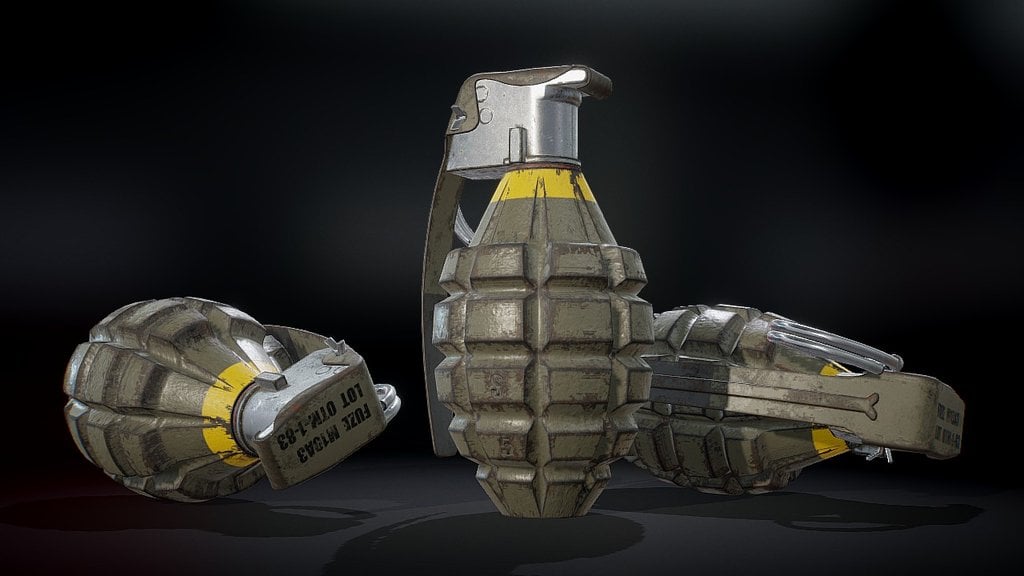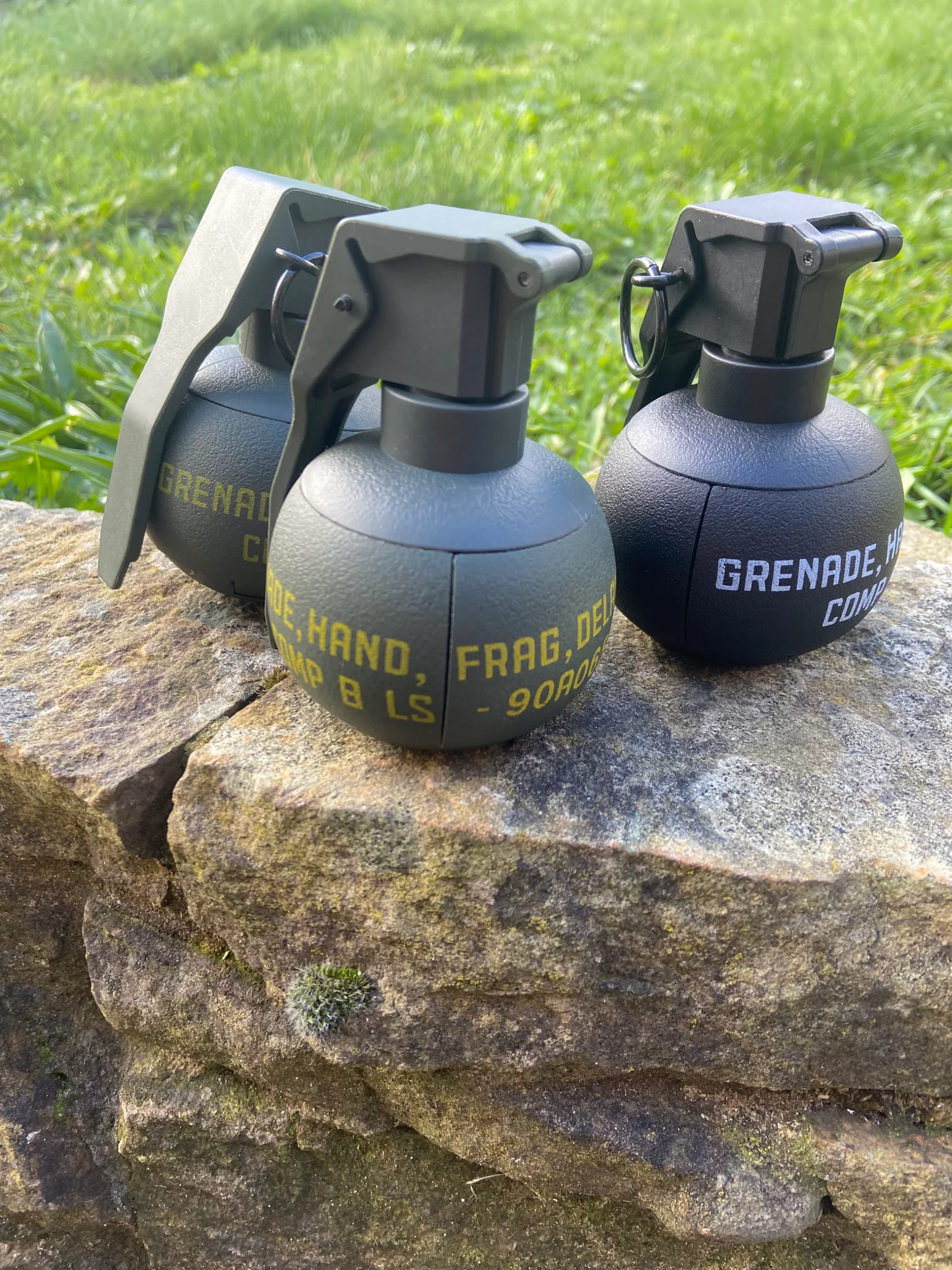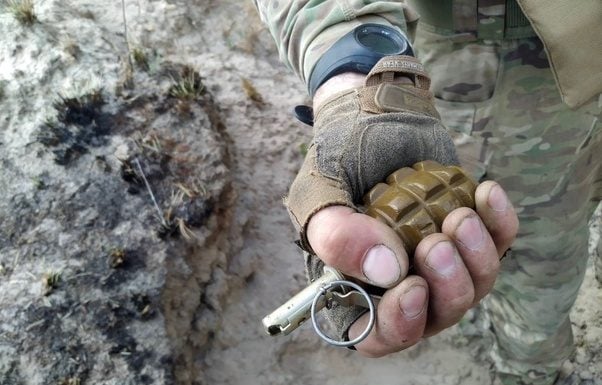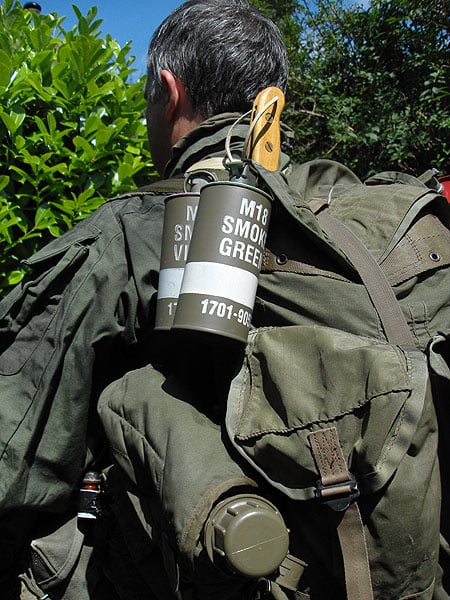The realm of military hardware is a fascinating domain, where innovation and effectiveness converge to shape the course of conflicts. Among the diverse array of weaponry, grenades have long held a pivotal role, serving as compact yet potent tools in the hands of skilled combatants.
The United States, renowned for its military prowess, has a rich history of developing some of the world’s most formidable grenade designs. In this comprehensive exploration, we delve into the stories and capabilities of four of the most powerful grenades ever fielded by the U.S. armed forces.
How Grenade Works?
4. Mk 2 “Pineapple” Grenade: A Fragmentation Icon
Emerging in 1918, the Mk 2 Grenade, affectionately dubbed the “Pineapple Grenade,” has etched its name in the annals of military history. This fragmentation-style weapon, characterized by its distinctive grooved design and pineapple-esque appearance, has seen action in numerous conflicts, from World War II to the Vietnam War.

Its lethal fragmentation capabilities made it a staple in trench warfare and guerilla engagements, where its ability to expel deadly metal shrapnel proved invaluable. With a production cost of around $15 per unit (adjusted for inflation), the Mk 2 Grenade’s affordability and effectiveness cemented its status as a reliable and indispensable tool in the U.S. military’s arsenal.
6 Toughest Special Forces Fitness Tests in the World
3. M67 Grenade: The Modern Fragmentation Standard
Introduced in 1968, the M67 Grenade has become the primary fragmentation grenade used by the U.S. military to this day. Featuring a spherical design, the M67 boasts an effective radius of five meters, making it a formidable close-quarters weapon.

Costing approximately $30 per unit, this grenade’s combination of lethality and cost-effectiveness has solidified its position as a go-to choice for American forces engaged in a wide range of combat scenarios.

10 Most Expensive Fighter Jets
2. M84 “Flash Bang” Stun Grenade: Disorienting the Senses
In contrast to its explosive counterparts, the M84 Stun Grenade, more commonly known as the “Flash Bang,” serves a different purpose. This non-lethal device is designed to disorient enemy combatants through a blinding flash and a deafening bang, rather than inflicting physical harm.

Favored by SWAT teams and Special Forces operators around the world, the M84 Stun Grenade costs roughly $47 per unit, underscoring its specialized role in tactical operations where incapacitating the target is the primary objective.

1. M18 Smoke Grenade: Versatile Concealment and Signaling
Introduced in the 1940s, the M18 Smoke Grenade is a multi-purpose tool that serves both concealment and signaling functions. Emitting a dense cloud of white or gray smoke, this grenade can be used to obscure troop movements or mark areas of interest.

The standard variant costs approximately $40 per unit, but the availability of brightly colored options, such as red smoke, allows for effective signaling and identification purposes. The M18’s adaptability has made it an indispensable asset in a wide range of military operations.
The Evolving Landscape of Grenade Technology
While the M67 Grenade has been the go-to explosive option for the U.S. military for nearly six decades, the quest for innovation continues. Several branches of the armed forces are exploring replacement options, with the Nammo offensive hand grenade emerging as a frontrunner. This new design allows for the connection of multiple grenades, thereby increasing the overall explosive power and versatility of the device.
As the landscape of military technology continues to evolve, the future of grenade warfare promises even more advanced and capable designs. With ongoing research and development, the next generation of grenades will undoubtedly surpass their predecessors in terms of lethality, precision, and versatility, further solidifying their crucial role in the modern battlefield.
Conclusion
The history of grenades in the U.S. military is a testament to the relentless pursuit of innovation and the unwavering commitment to providing soldiers with the most effective tools for the job. From the iconic Mk 2 “Pineapple” Grenade to the cutting-edge Nammo offensive hand grenade, these compact yet powerful devices have played pivotal roles in shaping the outcomes of countless conflicts.
As the military continues to push the boundaries of grenade technology, the world can expect to witness even more remarkable advancements in the years to come, solidifying the enduring importance of these small but mighty weapons in the annals of military history.















